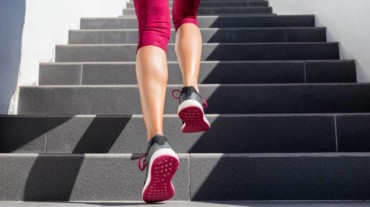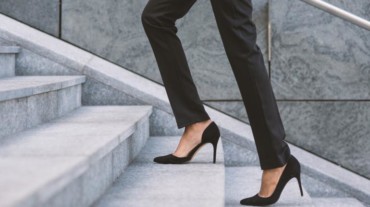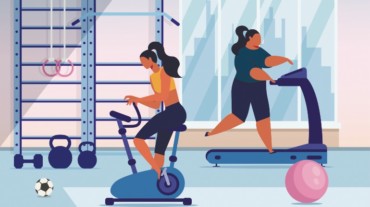
Years ago, I read about the then-50-something pop star, Madonna, talking about how she used to climb the stairs of the hotels she’d stay at while touring all over the world. Perhaps at that time, this practice was her way of making up for the absolute paucity of time that left her with no chance of squeezing in a proper workout.
Almost a decade later, Madonna’s advice has turned out to be perfect jugaad for me. However, this time, it wasn’t to make up for any paucity of time. In fact, it seemed like the only way to work out at home—given how the gyms were shut due to the covid-19 pandemic.
Why did I start ‘stairing’, you wonder?
Surely, there is no dearth of fitness bloggers, instructors, and coaches who’ve been hosting free or paid workout sessions online. There’s also no dearth of Zumba/dance/Bollywood workouts on YouTube that promise you great results.
But there’s a severe dearth of patience to find an exhilarating video first followed by a more severe dearth of willpower to finish off an entire 40-minute workout session while standing in front of the TV screen. Defo, not my style!
However, with a belly plunging out and my chins multiplying—thanks to all the quarantine-cooking experiments and boredom-snacking—I knew I had to do something. Obviously, that something had to accommodate my lack of patience and interest span for it to be able to last for long.
Enter: Climbing stairs
Fitness-conscious people talk about ditching the elevator and taking the stairs all the time. But people like me, who literally need a push to control their ever-increasing waist size, will ask you to resort to its high-intensity version.

At least that’s what I did. Two minutes of rapidly going up and down the stairs of my three-storey building, followed by a two-minute rest to catch some breath, and then getting back to the grind again till I completed several rounds of it.
On day 1, I began with three rounds of stair-climbing and by the end of the week, I managed to push myself to finish seven rounds within 10 to 15 minutes.
Now, if you’re already applauding my stamina for going uphill in such a short span, I’d like to confess that it was really my greed that led me to push my limits. After three days of rigorous 10-minute stair climbing, I noticed my belly looked flatter.
Now, you can blame it on my natural tendency to lose inches from my upper body first as well as on the fact that my body reacted really well to a high-intensity physical activity after days of leading a sedentary, quarantine lifestyle—but, stair climbing surely worked for me. Obviously, I backed it with clean eating too for quicker results.
Short, crisp, and effective—climbing stairs is a science-backed way to lose weight
Ladies, if you think, I am giving too much credit to climbing stairs, you’ve got to know that several studies including one published in The Korean Journal of Sports Medicine, have gone at lengths about the weight loss benefits of stair climbing.

The fact that doing it at a higher speed makes you breathe heavier, means that it makes your heart pump harder just like in case of any other cardio exercise and thus, makes you burn more calories.
Not to mention, that this is the very reason, climbing the stairs can boost your heart health. Additionally, all the sweating and the blood-circulation can give you glowing skin. And the use of your leg and foot muscles during this form of workout can tone-up that booty and make your lower body stronger too.
But, keep this in mind
Climbing stairs is all fun and games, however, if you suffer from a knee injury or problem already, you must avoid it as it can put some extra pressure on your knee and damage it further.
Also, listen:
Moreover, you’ve got to follow the correct stance while climbing the stairs, which involves keeping your balance intact. So, if you’re new to this, you can probably start by climbing the stairs slowly and then increasing the intensity gradually as you get a hang of it.